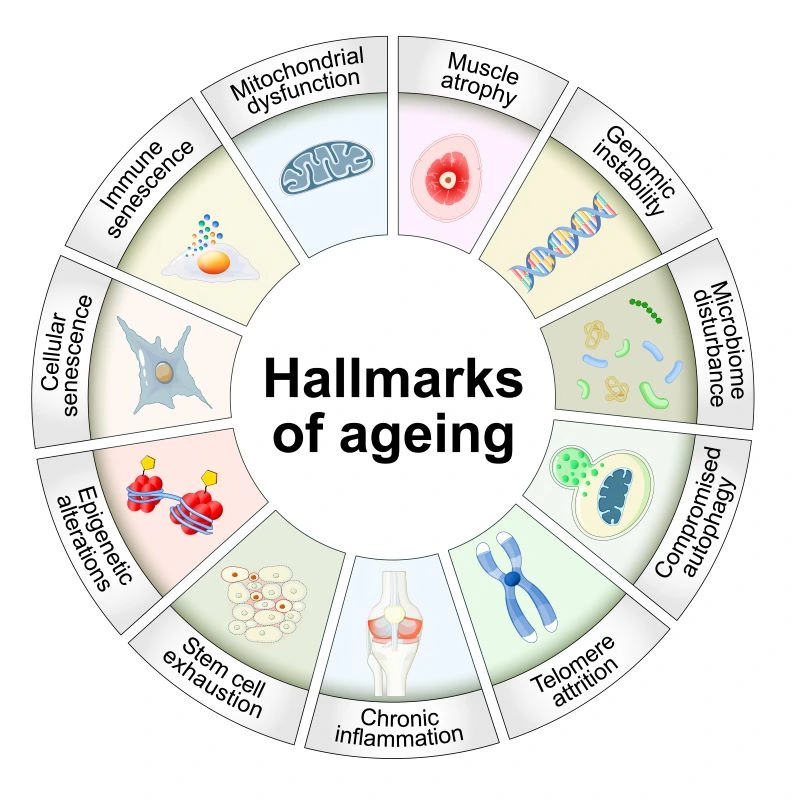The Future of Nutrition and Longevity Institute aims to “amplify life” with research and food innovation
Key takeaways
- The FNL Institute is set up to translate nutrition science into practical, affordable solutions that extend the healthspan.
- The institute will research and promote strategies across gut health, fermentation, and plant metabolites to help prevent chronic disease and enhance longevity.
- The institute focuses on nutrition, physical activity, and metabolism, guided by its international Scientific Advisory Board.
The newly opened Future of Nutrition and Longevity (FNL) Institute aims to promote the science of nutrition and its impact on healthy aging through research and innovative solutions. Nutrition Insight attended its official launch event on September 25 in Frankfurt, Germany.
Specifically, the institute will provide comprehensive and advanced nutrition information to producers and consumers to help them achieve and maintain a healthier life for longer. It will also present affordable science-based functional nutrition strategies to international markets.
Alexander Smerz, the FNL Institute’s head, says its mission is to “amplify life.”
“We are here to build the future and bridge science with application. We want to build on science and extend it to the next level.”
Smerz says the institute aims to explore “fundamental things” that will work for many people. “We are aware that not everything will always work for all people, as we are all generally different. We are not looking at beauty, reducing wrinkles, or biohacking. We are looking into improving food.”
“We want to bring something back to the industry that has been forgotten, how evolution was teaching us to nurture ourselves. Although the food industry has done many good things in the last 100 years, we have forgotten a bit about how secondary plant metabolites and holistic foods impact our body health.”

The institute will conduct and subsidize research in nutrition, as well as organize and support scientific studies to clarify the causalities between nutrition and longevity. It will also offer a platform to promote interactions between producers, processors, consumers, and scientists, and provide consultancy in nutritional concepts for longevity.
Hallmarks of aging
Understanding what impacts longevity and how to measure aging is important for improving healthy aging.
Andrea Maier, co-founder of the National University of Singapore’s Academy for Healthy Longevity, highlights that aging leads to multimorbidity, where people have multiple diseases at the same time. “Around 60% of 60-year-olds in the Western population have at least two or more chronic diseases.”
 The 12 hallmarks of aging include genomic instability, telomere shortening, loss of proteostasis, inflammation, and dysbiosis.Although these can be treated with medications, Maier warns that people with two chronic diseases might get another one, for which they need another drug.
The 12 hallmarks of aging include genomic instability, telomere shortening, loss of proteostasis, inflammation, and dysbiosis.Although these can be treated with medications, Maier warns that people with two chronic diseases might get another one, for which they need another drug.
“Why can I say that we are turning it around? Because we understand, even more than 20 years ago, why we age.”
Maier is also one of the founders of the Chi Longevity clinic in Singapore, which applies research and interventions against aging. The clinic uses advanced diagnostic techniques to detect a person’s biological age.
It bases these tools on the 12 hallmarks of aging, which include genomic instability, telomere shortening, loss of proteostasis (protein synthesis), mitochondrial dysfunction, epigenetic alterations, chronic inflammation, and dysbiosis.
“These hallmarks of aging are associated and very likely causally related to incidents of dementia, COPD, heart failure, and other illnesses,” explains Maier. The Chi Longevity clinic uses several interventions to influence these hallmarks and deliver a positive impact on people’s overall health.
Prolonging life and health
Maier calls for preventative medicine instead of conventional medicine, which determines whether a person is ill or healthy based on different variables. “What we try to achieve at precision geromedicine is looking at the decline, and even before the decline happens, to optimize an individual’s peak performance.”
For example, she highlights a paper summarizing all the evidence of the potential increase in lifespan that people could have by changing their diet from a normal to an optimal one.
“From not eating nuts to eating 25 g every day, people around 60 years old will potentially increase their lifespan by 1.5 years, just by changing from zero nuts to 25 g — a handful of nuts.”
Smerz adds that in the last 100 years, lifespan has increased dramatically, but the healthspan has stayed relatively stable.
“There are many factors why lifespan has improved, [by] reducing childhood mortality, we have much better medical and pharmaceutical treatments, public health and hygiene have improved, and so have living standards.”
 The institute aims to provide nutrition information to help people achieve a healthier life for longer and present science-based nutrition strategies to international markets.But, he explains, there is still a gap between lifespan and healthspan, the morbidity gap, where people’s physical and mental state is not as good as it should be. “This time is where we are spending most of the health costs of our lives, which impacts society.”
The institute aims to provide nutrition information to help people achieve a healthier life for longer and present science-based nutrition strategies to international markets.But, he explains, there is still a gap between lifespan and healthspan, the morbidity gap, where people’s physical and mental state is not as good as it should be. “This time is where we are spending most of the health costs of our lives, which impacts society.”
There is also a substantial increase in non-communicable diseases, which also comes at a societal cost.
“Prevention is a key factor to look at. How can we do better? How can we reduce inflammation and enhance parameters that are positive for our metabolism? That is what we want to achieve, where the healthspan is prolonged, the morbidity gap reduced, and we live longer,” says Smerz.
Collaboration is key
As a collaborative platform, the institute aims to work with the food industry to leverage its research into product development and applications.
In terms of research areas, its work program focuses on gut health, energy and mitochondria, leveraging health benefits from fermentation, natural appetite reduction in the GLP-1 space, wearable biosensors to measure food impact, and prevention of neurodegeneration and heart disease.
The institute will explore healthy foods and key ingredients in each area, such as kombucha and sauerkraut as fermented foods, or polyphenols’ impact on appetite reduction or disease prevention.
Smerz details that achieving the institute’s goals requires a joint effort. “As an institute, we can act on three things: nutrition, physical activity, and metabolism. For each of these segments, we have a specialist on our Scientific Advisory Board.”
Scientific Advisory Board
The institute’s Scientific Advisory Board includes professor Gunter Eckert from the University of Giessen (Germany), professor Vincenzo Fogliano from Wageningen University and Research (the Netherlands), and professor Patrick Diel, from the German Sport University Cologne.
At the launch event, these experts discussed how to improve healthy aging with interventions from their respective fields.
 The Scientific Advisory Board discussed how to improve healthy aging with interventions in nutrition, metabolism, and physical activity.Eckert points to the new recommendations from the German Society for Nutrition released last year, which are aligned with a planetary health-related diet.
The Scientific Advisory Board discussed how to improve healthy aging with interventions in nutrition, metabolism, and physical activity.Eckert points to the new recommendations from the German Society for Nutrition released last year, which are aligned with a planetary health-related diet.
“They recommend eating a daily portion of nuts, reducing red meat, and increasing consumption of whole grains, plants, and fruits. If you compare these with another diet approach, which is scientifically proven and has effects on healthy aging, that is the Mediterranean diet.”
“That is something we can follow very easily in Europe,” says Eckert. “There’s scientific evidence that not only the Mediterranean diet works, but also the Nordic diet, which includes more fish.”
Combining nutrition and physical activity
Fogliano highlights his work in food design to develop products that are healthy, sustainable, and affordable.
“There are two types of people: 50% are optimistic and take care of what they eat, but the other half don’t care. What can we do for these people? How can we try to make their diet a little better? That’s where food design comes in, where you can try to make the healthy choice the happy choice.”
“For example, if people like chicken wings, can we make them better without people realizing that these are better for you? Food design can play a role,” he underscores. “We know that playing with design, structure, and texture, we can nudge people to eat fewer calories or ensure less glucose absorption.”
Diel underscores that physical activity also plays a key role in healthy aging, in addition to nutrition. “As a person from sports, I feel that physical activity is very important.”
“It is important to educate people to be more physically active from the beginning,” he argues, noting that this is crucial in prevention and health.
“I recommend everybody to be physically active every day, like walking, biking, or using the stairs instead of the elevator. Then, depending on your age, you can do sports-specific training, which is recommended for bone and muscle health.”
















